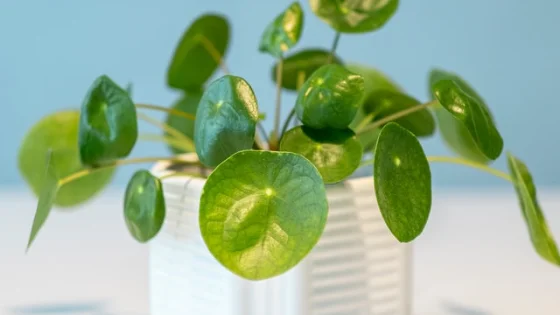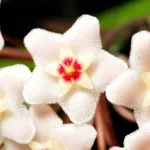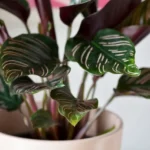Table of Contents
How To Care For Peperomia Hope
The peperomia hope is a perennial that originates from tropical areas in Central and South America. This particular kind of peperomia plant has small and succulent rounded leaves that have light green striping.
These leaves are thicker than most peperomia plants. The stems are soft and grow long, like vines. Because of its lovely appearance, and its ability to tolerate various types of conditions, the peperomia hope makes a great houseplant.
What does your peperomia hope require?
Peperomia hope plants do not require high levels of maintenance. They are perfect for individuals who want to have beautiful houseplants but don’t have a lot of time or experience caring for greenery.
The following requirements are the basics for taking care of peperomia hope and helping them thrive.
Light requirements
Peperomia hope plants require medium to bright levels of light. This light does not have to be directly from the sun. While morning light works well, filtered light works too. 12-16 hours of artificial light per day will also be sufficient.
Direct sunlight or heat from the sunlight may damage the plant, however, if the peperomia hope plant does not obtain enough light, the colors will start to fade, and the leaves will droop.
Temperature requirements
The best temperatures for these perennials is between 18-24 degrees Celsius (65-75 degrees Fahrenheit).
Humidity requirements
Peperomia hope plants survive and thrive in an average household humidity of between 40-50%. These perennials should be placed in an area with good air circulation.
Soil requirements
These houseplants grow best in rich potting soil with a pH of between 6 and 6.6, such as mixtures made of equal parts of perlite and peat moss. Pots should have an adequate drainage system.
Because peperomia hope plants tend to remain small, typically only growing up to eight inches tall, repotting isn’t usually required more than every two years unless it grows too big for its original container.
When the caregiver does repot the plant, it is always recommended to check the roots, stems, and leaves for discoloration, bugs, and other ailments.
How to Water
Peperomia hope plants do not require a lot of water. During the growing season, watering can be done every seven to ten days.
The soil should be kept moist but not wet. During the winter months, the plant should only be watered when the soil is dry. Overwatering can lead to disease.
Any pots or containers used to house peperomia hope must have adequate drainage. Water-logged soil can cause various types of disease to form, and it can also attract certain types of insects that may damage the foliage.
How to Fertilize
A new peperomia hope plant can be fed using liquid food. It should be given every two weeks during the growing season.
If dry fertilizer is added instead, only half-strength is needed. Controlled-release fertilizer pellets are another suitable option. Plant food is not necessary during winter.
Extra Tips for Peperomia Hope
While the peperomia hope is fairly easy to care for, there are always tips that can help make a plant healthier with increased longevity. Some tips refer to treating ailments, while others pertain to pruning and propagation.
Pests and Diseases
Despite being quite resilient, peperomia hope houseplants have some common pests and diseases. In many cases, they can be successfully treated.
- Mealybugs: These pests are the most common. They are usually discovered as small white masses on the underside of peperomia hope plants. They can cause white cotton or wax-like substance to form on the leaves or stem. Insecticides or insecticidal soap can remedy this issue. As an instant treatment for a small number of insects, a 70% concentration of rubbing alcohol can be applied directly to the insects. It kills them on contact. It is vital to check the peperomia hope leaves for this issue so it can be discovered as quickly as possible because larger infestations are more difficult to treat.
- Fungus gnats: This pest is a small black fly that can be found in the soil around peperomia hope. Damage to plant roots is caused by the larvae feeding on them. The adult flies do not damage the plant. There are insecticides available to treat this issue.
- Calcium deficiency: This occurs in peperomia hope houseplants when they are overwatered. Repotting the plant into fresh soil can help remedy this issue.
- Root rot: This is a common issue in plants that have been overwatered. Repotting the plant into a new pot with fresh soil can help. A fungicide may be required depending on the severity of the issue.
Pruning
The peperomia hope needs to be pruned occasionally to encourage growth and prevent it from gaining a stringy appearance.
This can be done by snipping off the dead stems and the areas that look “leggy” using a sharp, sterile set of pruning shears or blade. The best time to prune this houseplant is in early spring before the growing season.
Peperomia hope plants can grow stems up to 18-inches long. Often, professionals will snip off the emerging leaves to focus attention on these longer vine-like stems for the appearance.
Not only does this make the plant look incredible, but it also encourages more growth along the stem.
Propagation
Stem cuttings are considered the best way to propagate peperomia hope. Plant stems should be cut just below a node and be about three inches (8cm) in length.
Each cutting needs at least two leaves near the tip of the stem. Peperomia hope cuttings need to be placed in water until they produce roots.
When the peperomia hope cuttings develop roots, they can be placed in a small pot filled with moist soil. The whole container should be covered with a plastic bag to retain moisture.
This can then be placed in a warm and bright location. Once the cuttings have taken root in the soil, which takes up to three weeks, the plastic covering should be removed. At that point, the peperomia hope needs to be repotted.
Regular care for these plants, as mentioned above, may then start.
Toxicity
The peperomia hope is not toxic to humans or animals.
Photo by Maarten Deckers on Unsplash



